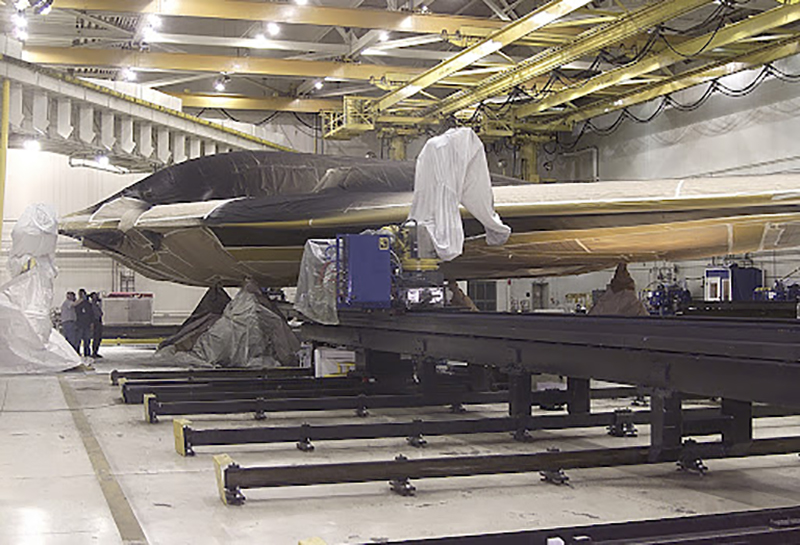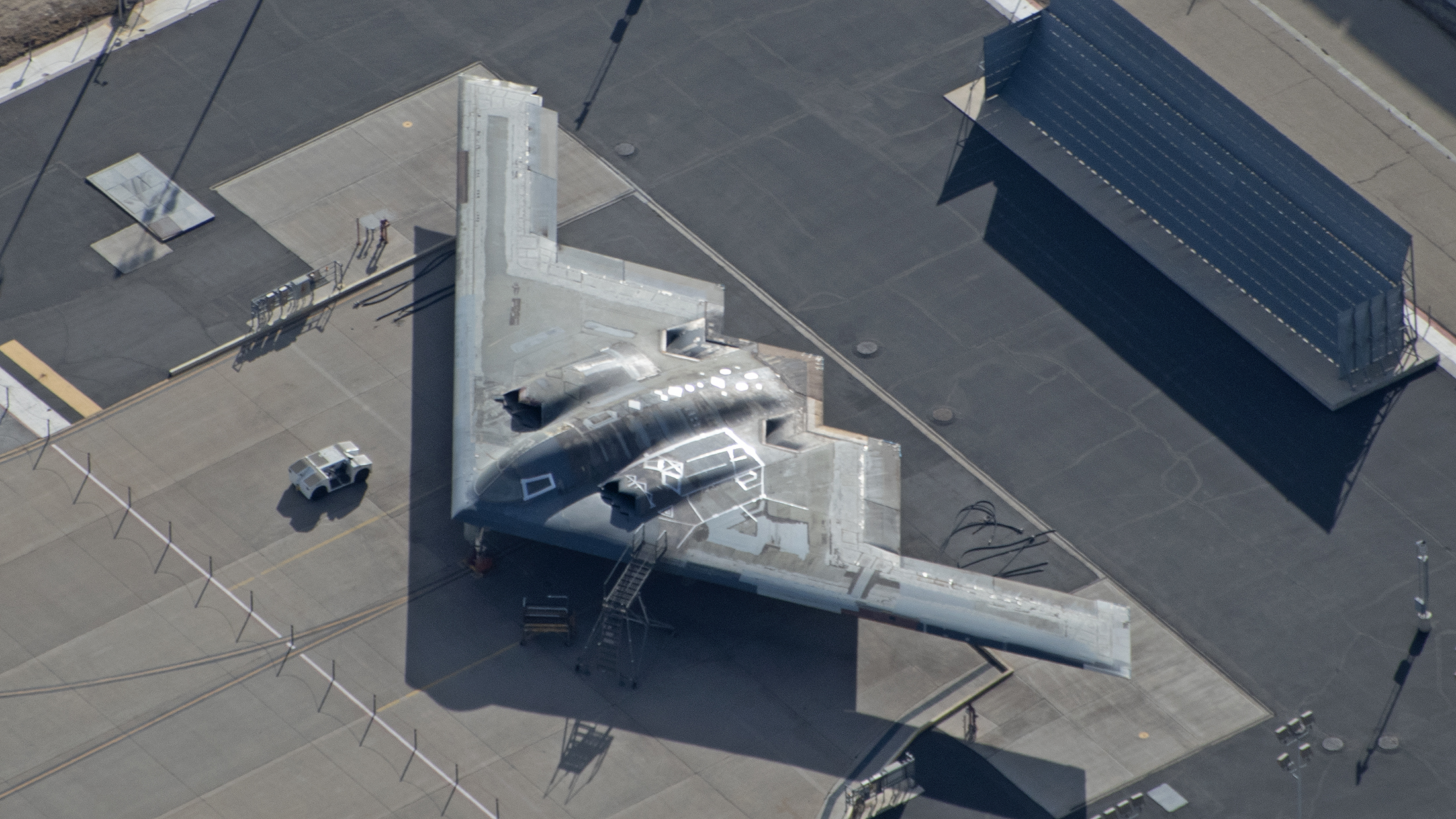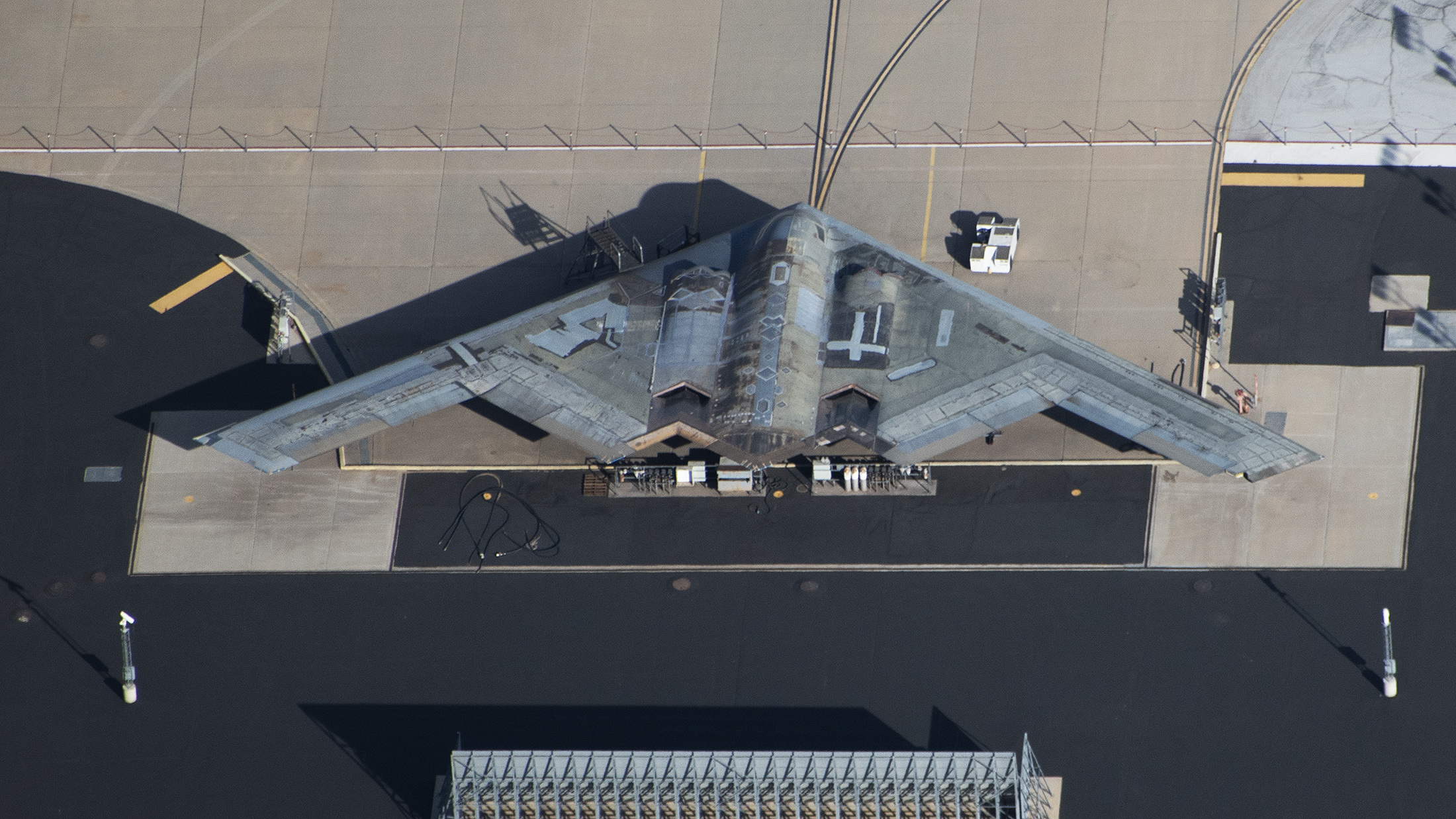Prior to the order for the new VC-25B Air Force One jets, the 21 B-2 Spirits ever built were the most expensive flying machines mankind ever created. Their design also represented an absolute revolution in aerospace technology, albeit one that is now nearly four decades old. The B-21 Raider, which is being built by Northrop Grumman behind extreme security at the sprawling Plant 42 installation in Palmdale, Calif., will show us the next great leap in stealth bomber technology, but we are still at least months from seeing it. The B-21 is slated to enter service around the middle of this decade, a highly ambitious goal, but until then, its flying wing progenitor will soldier on.
Author’s note: See the update at the bottom of this story that has new information on this specific airframe, which is actually a test article.
Keeping the Spirit force flying is no easy task. The stealth jets are notoriously finicky and extremely expensive to operate—around $170,000 per hour, putting it at the top of the per hour flight cost rubric for the Air Force’s inventory. Parts obsolescence—remember it was built upon 1980s technology—and its tiny fleet size conspire against its readiness. Above all, its sensitive low-observable coatings and structures are maintenance intensive, although they are easier to maintain than they once were thanks to major strides in material science and automated application processes.
Regardless, these jets need a lot of work and every so often — every nine years to be exact — they need a complete depot-level overhaul. That also happens at Plant 42. It’s here where the aircraft get disassembled and rebuilt, oftentimes better than they were before with new upgrades to show for its downtime.

With that all being said, Plant 42 is where we find one of the remaining 20 B-2s. One of these bombers was recently damaged during a landing incident, although it is very unlikely to be the airframe we see at the facility in Palmdale. This aircraft was spotted by a private pilot transitting the area. They sent us some photographs of one of the Spirits sitting out on the ramp in its deep maintenance slumber. As you can see in the shots, the jet has been at least partially stripped of its coatings and some of its radar attenuating parts as it awaits the next step in its overhaul process. It’s a fascinating study in seams, embedded antennas, and patina of an aircraft that is at least nearly 25 years old by now—the last B-2, the Spirit of Louisiana, was delivered in 1997.


These aircraft have seen a lot of work done to their composite structures over the years. In fact, one of them was totally rebuilt following a fire that burned critical areas of the jet badly. The B-2s are just so precious that they get repaired when no other bomber would be.
One of the new B-21 Raider’s primary design objectives is for its radar absorbant sheathing to be much more sturdy and far less maintenance intensive than the B-2’s. Considering all that Northrop Grumman has learned from sustaining the B-2 over the decades and how far low-observable engineering and material sciences have come in that time, the B-21 will be more user-friendly and economical in this regard, but just how much so is still to be seen. The company certainly seems confident that the B-21 will be a revolution over the B-2 in this regard.
These photos are a stark reminder of the age of the B-2 fleet — which isn’t apparent in most photos — as the bat-winged bomber looks positively alien to this very day when inhabiting its jigsaw-puzzle like, smooth stealthy skin. Above all else, the images highlight just how much work goes into keeping the majority of the 20 remaining B-2s ready for flying at any given time. It is simply amazing how much infrastructure and specialized capabilities exist for just 20 machines. But even so, the B-2 offers clear value for what it returns in capabilities. There is nothing on earth today in operation that can do what it does—including delivering gigantic Massive Ordnance Penetrators (MOPs) onto deeply-buried, highly fortified bunkers located deep in enemy territory. That is an amazing thing to ponder considering the type has been flying for 32 years.
The B-21 has some very big shoes to fill.
UPDATE:
We have new information from Northrop Grumman on this unique airframe! It turns out, it is not a flying B-2 at all. Apparently it is a test article they use for all different kinds of developmental and sustainment work:
B-2 Test Article 0998, a non-operational aircraft that has supported testing for the program for over three decades. In that time and still today, it plays an important role on the B-2 program, utilized to test new low-observable materials, and to refine maintenance and repair techniques and procedures.
So there you have it! Another interesting facet to the B-2’s story. I would imagine this test article has done absolutely critical work to keep the B-2 as relevant and as survivable as possible as it has aged over the years.
Contact the author: Tyler@thedrive.com
